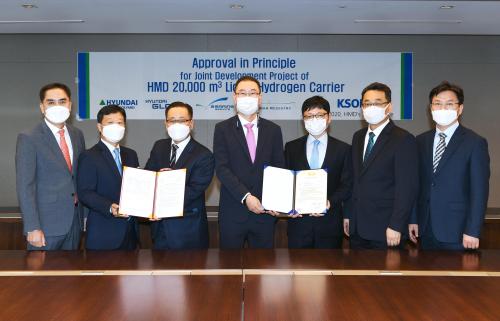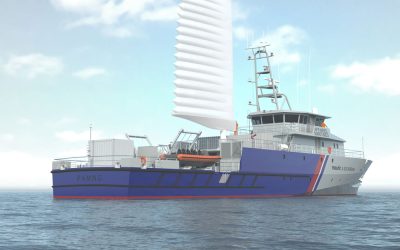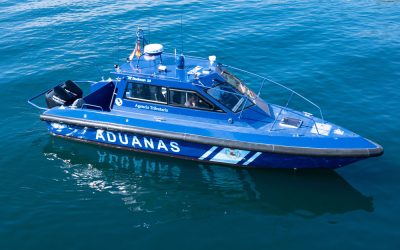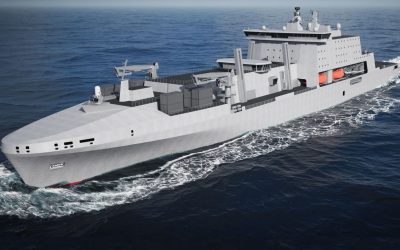Like many nations, South Korea is putting its faith in hydrogen to meet its future energy demands, but for a country that prides itself on being at the forefront of technology that means more than simply following the crowd. In January 2019, the Korean government published its Hydrogen Energy Roadmap, which outlines its goal of becoming the world’s leading hydrogen economy. The following year, its National Assembly ratified this with the Hydrogen Law – Hydrogen Economy Promotion and Hydrogen Safety Management Law, the first legal framework of its kind anywhere in the world.
Maritime takes a central role in those plans, both in terms of hydrogen-based fuel solutions for shipping and the transportation of hydrogen to Korea for wider applications. The Korean government hopes to eventually stimulate investment in local production, however even at maturity it’s anticipated that at least half of hydrogen demand will still need to be met by imports.
In October last year, the Korean Register of Shipping (KR) granted the first Approval in Principle (AiP) for a large liquid hydrogen carrier design developed by Hyundai subsidiaries Korea Shipbuilding & Offshore Engineering (KSOE) and its shipyard Hyundai Mipo Dockyard (HMD). The 20,000m3 vessel, which is being developed in partnership with operator Hyundai Glovis as well the Liberian registry, will include doublewalled vacuum-insulated tanks to store the hydrogen, while an electrical propulsion system powered by hydrogen fuel cells would utilise boil-off gas.
KR tells The Naval Architect that it is also working with Daewoo Shipbuilding & Marine Engineering (DSME), Samsung Heavy Industries (SHI) and KSOE on a separate hydrogen carrier project to import green hydrogen from overseas. In addition, KR is currently engaged in type approval for a ship fuel cell system developed by an undisclosed manufacturer.
Earlier this year, KR and KSOE signed an MoU to develop the first international standards for hydrogen ships. Kang-Woo says that it is part of a range of hydrogen safety standard development projects KR currently has in the works.
Hydrogen storage and handling
Dr. Chun Kang-Woo of KR’s Green Ship Technology team explains that hydrogen containment onboard ships is generally divided into either high-pressure gas storage or cryogenic liquid storage, depending on the purpose and operating distance of the vessel. High-pressure storage, which compresses the hydrogen to around 250bar or higher within a pressurised container, is currently the more mature technology.
High-pressure containers are essential components in the design of such ships, and these must be capable of controlling the rising temperatures caused by hydrogen charging as well as precautions to protect against natural hydrogen leakage from the wall of the container. “Such measures are widely applied to land vehicles and there are already cases of such applications on some small ships at sea for government-led research and pilot projects,” says Kang-Woo.
The fuel supply systems from the pressure containers to the fuel systems (be it an internal combustion engine or fuel cell) is a relatively simple setup consisting of pressure control regulators, filters and valves and suitable for small ships. However, high-pressure hydrogen can cause some brittleness in metal materials, hence there is a preference for Type IV (polymer based) containment systems.
But for larger capacity transportation and storage liquid hydrogen, which has a higher volumetric density, is a more viable option. Its storage temperature of -250°C is much lower than that of LNG (-83°C), making it necessary to develop and apply new techniques to address issues such as heat insulation, materials selection and boil-off.
Land based liquid hydrogen storage facilities consist of primary barriers in direct contact with liquid hydrogen, as well as insulation and secondary layers that are directly exposed to the outside. “Storing liquid hydrogen on ships and using it as fuel is still in the research stage, but it is expected that a similar structure will be needed,” says Kang-Woo.
“Research into IMO Type-B and Type-C containment tanks, which can be commercially produced while maintaining insulation performance and offering the least chance of leaked hydrogen in the hull, is actively underway. Hydrogen fuel supply systems are expected to be developed to meet the requirements of fuel consumers with large ships, but the supply systems should be subject to stricter safety standards than LNG.”
For the full article please see October’s edition of The Naval Architect.




